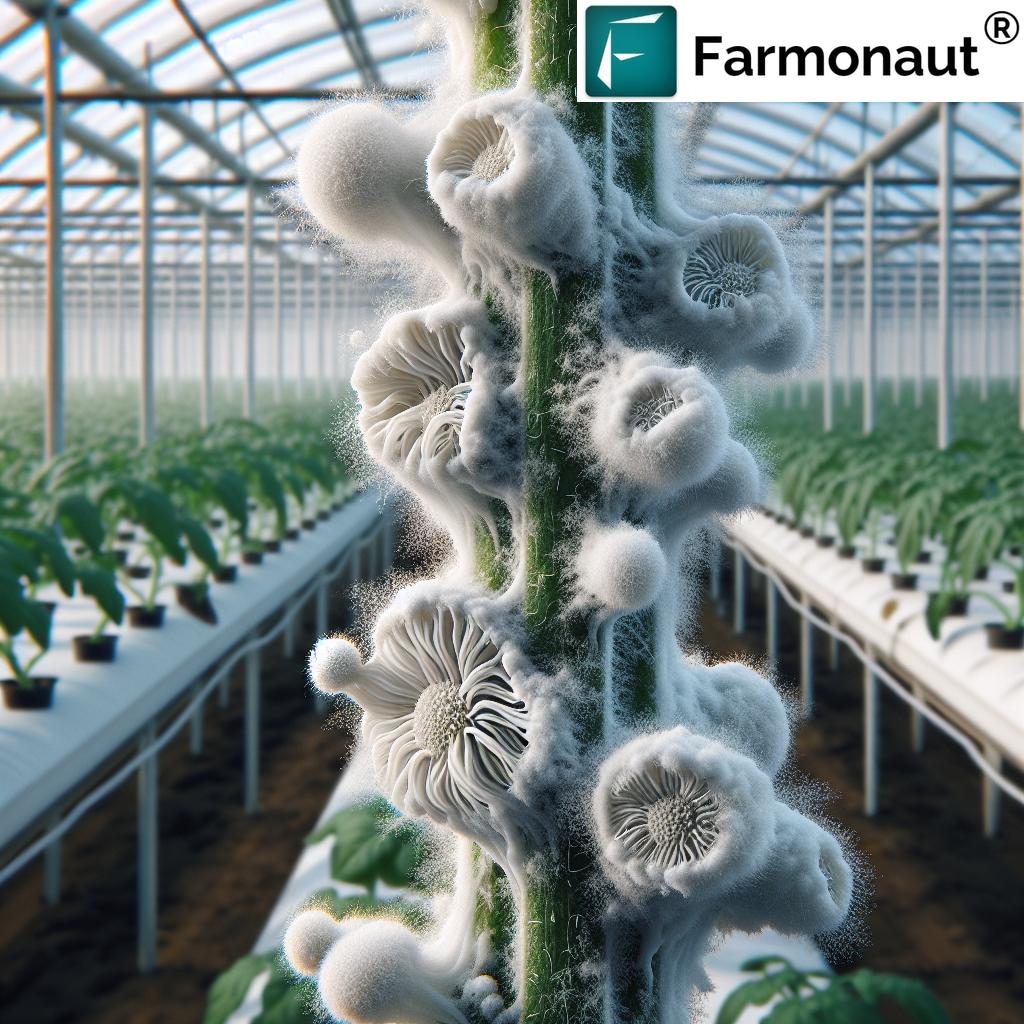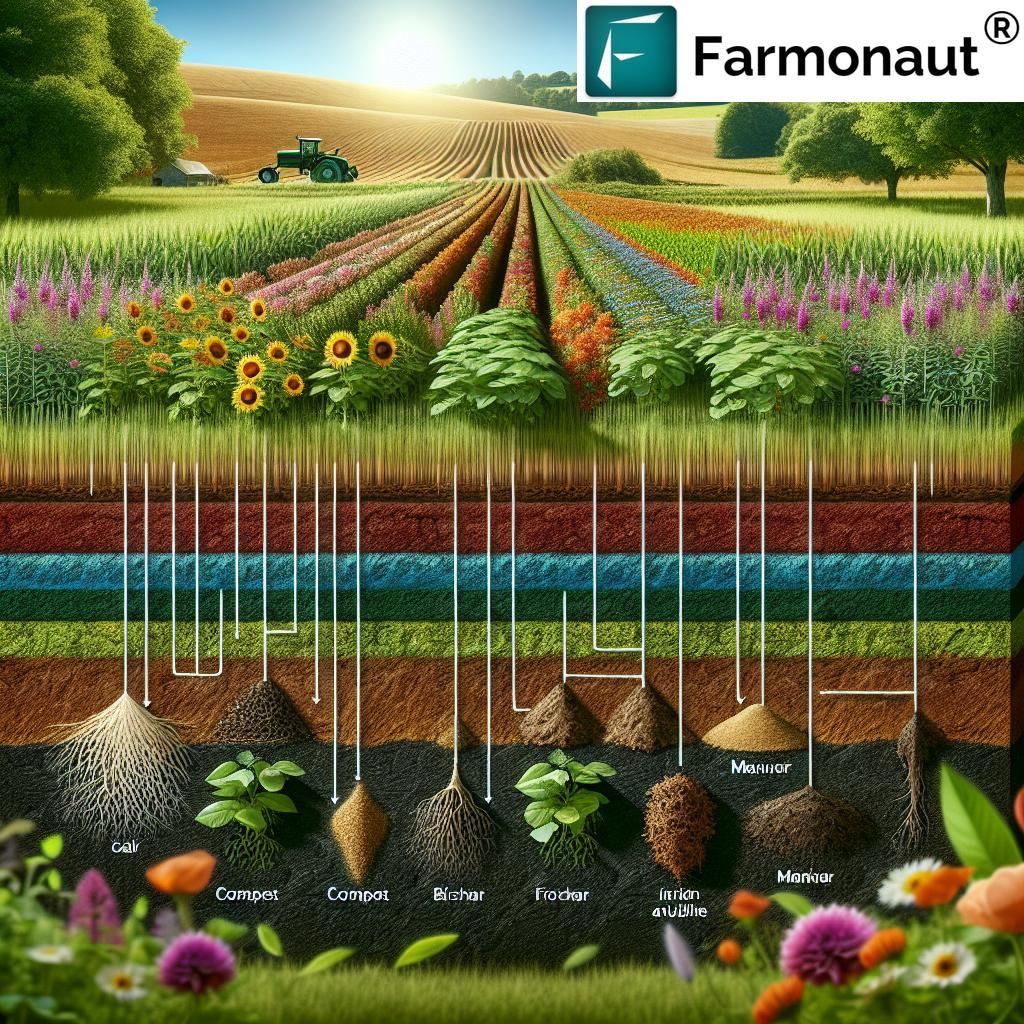Table of Contents
- Summary: The Olive Tree – A Timeless Asset in Agriculture
- Introduction: Olive Tree Care in 2025 and Beyond
- The Agricultural Importance of Olive Trees
- Varieties and Characteristics: Black Olive Tree, Tea Olive Tree, and More
- Olive Tree Care: 7 Tips for Healthy Olive Tree Plant
- 1. Careful Site Selection and Soil Preparation
- 2. Choosing Quality Saplings and Planting Techniques
- 3. Optimal Watering & Irrigation Strategies
- 4. Pruning for Growth & Disease Management
- 5. Nutrition Management and Olive Tree Compost
- 6. Integrated Pest and Disease Control
- 7. Harnessing Technology & Sustainable Practices for Olive Care (2025 and Beyond)
- Comparison Table: Sustainable Olive Care Practices & Impact
- Sustainable Olive Cultivation: Socio-Economic & Environmental Impact
- Future Trends & Challenges in Olive Tree Farming for 2026–2030
- How Farmonaut Supports Sustainable Olive Tree Management
- FAQs: Olive Tree Care & Sustainable Farming
- Conclusion: Preserving the Legacy of Olea europaea
“Olive trees can increase soil organic matter by up to 20% when cultivated with sustainable farming techniques.”
Summary: The Olive Tree – A Timeless Asset in Agriculture and Sustainable Farming
The olive tree (Olea europaea) stands as an enduring and economically significant crop within agriculture, revered for its resilience, yield, and environmental value. Particularly renowned in Mediterranean climates and growing in suitable regions worldwide, the olive’s journey from ancient groves to modern, sustainable plantations reflects both tradition and innovation.
As we approach 2026 and beyond, advances in olive tree care, cutting-edge technology, and sustainable farming practices are boosting yield, improving soil health, and magnifying the environmental impact of olive cultivation. The integration of olive tree compost, regenerative practices, and real-time monitoring through platforms like Farmonaut are paving the way for a new era in agricultural management.
Introduction: Olive Tree Care in 2025 and Beyond
The olive tree is far more than just an iconic plant of the Mediterranean. As global interest in sustainable farming systems and high-quality produce rises, olive cultivation is experiencing renewed attention from farmers, researchers, and environmentalists alike.
With mounting demand for olives and olive oil—prized for their recognized health, culinary versatility, and sustainability—the need for best practices in olive tree care grows ever more important. Modern olive farming focuses on adapting to climate change, drought tolerance, and reducing input costs while enhancing soil health and overall environmental sustainability.
The Agricultural Importance of Olive Trees
Olive trees, or Olea europaea, have thrived for thousands of years, owing to their adaptability, drought resistance, and ability to flourish in poor soils. They are a fundamental asset for both smallholder farmers and large commercial plantations alike, providing a source of income, food, and even social stability in rural regions.
- Olive trees require less water than many commercial crops—an essential trait in regions facing water scarcity.
- By their deep roots and extensive canopy, olives play a role in preventing soil erosion and preserving ecological balance.
- Olive oil and table olives are consistently in high demand on a global scale, driven by health-conscious consumers and dynamic culinary trends.
As sustainable agriculture becomes a necessity, not a luxury, the olive tree stands at the crossroads of tradition and innovation. Its unique position ensures that olive tree care will remain a subject of global importance as we move into 2026 and beyond.
Varieties and Characteristics: Black Olive Tree, Tea Olive Tree, and More
Olive trees are not all the same. Among the wide array of types, two common references often arise: the black olive tree and the tea olive tree (Osmanthus fragrans).
Black Olive Tree (Olea europaea)
- Black olive trees are famed for their ripe, dark fruit, widely used both for table olives and oil production.
- This variety is valued for its high oil yield, robust flavor profile, and adaptability.
Tea Olive Tree (Osmanthus fragrans)
- Tea olive trees, despite the name, are botanically distinct from true olives.
- They are praised primarily for their aromatic flowers and ornamental properties, rather than olive production.
When considering olive tree care, always distinguish between fruit-bearing olives and ornamental varieties for optimal results in your agriculture systems.
Olive Tree Care: 7 Tips for a Healthy Olive Tree Plant in 2025
As olive farming evolves, these seven care tips are essential for maximizing yield, fostering sustainability, and mitigating environmental impact in modern agriculture. Each practice is rooted in leading research and farm experience from Mediterranean climates to expanding regions worldwide.
“Proper olive tree care may boost average yield by 15% per hectare while lowering environmental impact in 2025.”
1. Careful Site Selection and Soil Preparation
Success in olive tree care hinges on starting right with the site. Olives prefer slightly alkaline soils (pH 6.5–8.5) that offer excellent drainage. Poorly drained soils or compacted areas risk root diseases and limit growth.
- Test soil to analyze pH, organic matter, and nutrient levels before planting.
- If required, amend poor soils with well-matured compost—especially using olive tree compost derived from pruning and processing waste.
- Ensure full sun exposure; olives need at least 6–8 hours of light daily for optimal fruit development.
- Wind protection is advisable, especially in young plantations and exposed regions.
These steps lay the foundation for healthy olive tree plants able to withstand environmental challenges and deliver consistent yields.
2. Choosing Quality Saplings and Planting Techniques
Selecting high-quality, disease-free olive saplings boosts long-term plant health. When planting:
- Opt for robust, locally adapted olive varieties (including popular black olive tree cultivars) to reduce future susceptibility to pests and diseases.
- Space trees at least 5–7 meters apart to allow air circulation and root expansion—especially important for commercial plantations.
- Plant at the correct depth, ensuring the union between rootstock and scion is above ground.
- Incorporate organic matter in the planting hole to enhance initial root development and soil structure.
These planting best practices form the first defense against many future problems in olive farming and have direct impacts on management efficiency and yield.
3. Optimal Watering and Irrigation Strategies
While olive trees exhibit remarkable drought resistance once mature, regular watering is crucial for young plants. However, overwatering is a common cause of root rot and other diseases.
- Adopt drip irrigation systems in plantations to precisely manage water and reduce waste, a practice increasingly vital under climate change pressure.
- Mulch with organic olive tree compost around the base to conserve soil moisture, moderate temperature, and suppress weeds.
- Gradually reduce watering as trees mature, monitoring local rainfall and soil moisture conditions.
This water-wise management lowers costs, boosts drought tolerance, and directly impacts yield and environmental footprint.
4. Pruning for Growth, Productivity & Disease Management
Effective pruning is a cornerstone of olive tree care. Pruning shapes the tree, encourages healthy branching, and improves airflow—vital for reducing disease and pests.
- Prune annually after harvest or during late winter to remove weak, diseased, or crossing branches.
- Shape trees for maximum sunlight penetration; sunlight is essential for both growth and fruit production.
- Avoid excessive pruning, as severe cuts can reduce yield and stress the plant.
- Apply pruning residues as olive tree compost to return nutrients and organic matter to the soil, supporting a circular agriculture system.
Well-pruned trees are more productive, have better fruit quality, and are easier to harvest and manage.
5. Nutrition Management and Olive Tree Compost
Balanced nutrition sustains tree health and productivity over decades. Olive trees have unique nutrient requirements—particularly potassium, calcium, and magnesium. Regular soil tests—at least every two years—guide fertilization and organic amendments.
- Olive tree compost (from mill waste and pruning residue) is an ideal organic fertilizer—enhancing microbial diversity, improving soil structure, and increasing organic matter.
- Apply compost and/or green manure to boost soil fertility, minimize chemical input, and support long-term sustainability in plantations and smallholder systems alike.
- Use foliar sprays or targeted micronutrient applications only if soil tests indicate deficiencies. Overuse of synthetic fertilizers may decrease soil health and increase environmental impact.
Composting olive processing waste not only recycles nutrients but helps reduce environmental challenges by managing agricultural by-products efficiently.
6. Integrated Pest and Disease Control in Olive Tree Care
Pests and diseases remain a major challenge in olive tree farming, even for the tough Olea europaea. Among the most notorious threats are the olive fruit fly (Bactrocera oleae) and Xylella fastidiosa bacterium.
- Practice integrated pest management (IPM)—combining regular monitoring, pheromone traps, organic controls, and targeted chemical interventions only when necessary.
- Encourage beneficial insects (predators and pollinators) by promoting biodiversity in and around olive plantations.
- Maintain strong sanitation by removing fallen fruit/leaves and promptly disposing of infected material using composting methods.
- Soil health is a key line of defense: robust trees resist pests and diseases far better.
Ongoing research and adaptation to emerging pests ensure olive tree care practices remain resilient and effective.
7. Harnessing Technology & Sustainable Practices for Olive Tree Care (2025 and Beyond)
The future of olive tree care will be defined by technology adoption and climate-smart systems. Key approaches include:
- Precision agriculture tools—such as real-time satellite monitoring, sensors, and data analytics—enable farmers to make informed decisions and optimize resource use.
- Platforms like Farmonaut help monitor soil health, moisture, vegetation, and carbon footprint in olive plantations, promoting environmental sustainability and compliance with upcoming regulations. Discover Farmonaut’s carbon footprinting solutions for agriculture.
- Blockchain-based traceability is growing in importance, especially for premium olive oil producers seeking differentiation in the global market. Explore product traceability by Farmonaut to boost market trust.
- Regenerative agriculture, carbon farming, and agroforestry practices integrated into olive cultivation enhance ecosystem services and farm profitability.
- Adoption of mobile and web apps, such as those from Farmonaut (see below), allows for continuous crop monitoring, early warning alerts, and management of multiple olive orchards at scale.
By blending tradition and advanced agriculture technology, farmers achieve superior yield, reduce environmental impact, and build resilient systems to face 2026 and beyond.
Monitor your olive trees remotely, track soil health, irrigation, and yield trends in one place with Farmonaut Apps!
For developers and agricultural businesses wanting to build real-time monitoring or advisory platforms for olive plantations, explore the Farmonaut API for direct satellite data access.
See full developer documentation here.
Comparison Table of Sustainable Olive Tree Care Practices and Estimated Impact (2025)
| Care Practice | Sustainability Benefit | Estimated Yield Increase (%) | Estimated Environmental Impact Reduction (%) | Additional Notes |
|---|---|---|---|---|
| Organic Mulching & Olive Tree Compost | Soil health improvement, erosion prevention | +7–10% | -15% | Suitable for all soil types; circular waste use |
| Drip Irrigation | Water conservation, disease reduction | +6–9% | -25% | Optimizes for drought-prone regions |
| Pruning & Canopy Management | Better light, airflow, fewer pests | +8–12% | -10% | Improves harvest efficiency |
| Integrated Pest & Disease Control (IPM) | Reduces chemical use, supports biodiversity | +3–6% | -18% | Essential for organic certification |
| Precision Soil Nutrition | Reduces excessive fertilizer run-off | +5–8% | -12% | Guided by regular soil tests |
| Farmonaut Technology/Remote Monitoring | Optimization of all input uses | +12–15% | -28% | Year-round farm management; scalable |
| Regenerative/Agroforestry Practices | Enhances carbon sequestration, boosts biodiversity | +9–12% | -35% | Supports long-term rural sustainability |
Sustainable Olive Cultivation: Socio-Economic & Environmental Impact
Olive trees hold a vital role in sustainable agriculture—economically, socially, and environmentally. Cultivation practices that prioritize soil health, carbon management, and resource efficiency have benefits that extend beyond farm boundaries:
Socio-Economic Benefits:
- Provides stable income and employment in rural areas worldwide, especially Mediterranean and similar climates.
- Drives economic resilience for smallholder farmers and commercial ventures alike via rising global demand for organic and premium olive oil.
- Fosters community development and food security through low input costs, diverse by-products, and local processing industries.
Environmental Contributions:
- Extensive root systems reduce soil erosion, stabilize landscapes, and protect watersheds, making olives a strategic crop for erosion-prone lands.
-
Olive groves serve as carbon sinks—capturing atmospheric CO2 and helping reduce agriculture’s climate impact.
See carbon footprint monitoring with Farmonaut for measurement and compliance. - Integration with regenerative practices and agroforestry further enhances biodiversity, supports ecosystem services, and improves long-term climate resilience.
In 2026 and beyond, sustainable olive farming will remain a model for balancing productivity and environmental stewardship.
Future Trends & Challenges in Olive Tree Farming for 2026–2030
As global agriculture evolves, several emerging challenges and opportunities will shape olive tree management in the next decade:
- Climate adaptation remains crucial: With changing rainfall patterns and greater weather extremes, drought-resistant varieties and smart irrigation will be imperative.
- Emerging pests and diseases: Continued vigilance and research are demanded by threats such as Xylella fastidiosa and the olive fruit fly—which require integrated management and potentially resistant tree varieties.
- Technology adoption accelerates: Satellite imagery, AI-based advisory systems, and blockchain traceability will underpin improved yield, traceable supply chains, and compliance with export regulations.
- Organic demand drives change: The surge in demand for organic, certified, and traceable olive oils requires farmers to adopt verifiable, sustainable practices across their supply chains.
- Regenerative agriculture becomes mainstream: Integration of agroforestry, carbon farming, and ecosystem diversity will define regional and global standards for olive production.
Staying ahead of these trends ensures olive tree care remains profitable and environmentally sound—especially when leveraging smart farm management platforms.
Manage large-scale olive orchards with ease—explore the benefits of Farmonaut’s farm management solutions for olive crop operations, including remote field monitoring and team/task management.
For plantation-scale advisory or expansion, Farmonaut’s crop plantation and forest advisory connects users with real-time land data and seasonal smart tips.
How Farmonaut Supports Sustainable Olive Tree Management
As sustainable practices become central to olive farming, Farmonaut stands as a leader in satellite-driven agricultural management. Our platform supports olive farmers, plantation managers, agribusinesses, and government institutions in optimizing:
- Crop health (NDVI), soil moisture monitoring, and early disease or drought alerts—all crucial for healthy olive tree care.
- Resource use—from irrigation scheduling to predictive yield mapping—boosting profitability while minimizing environmental impact.
- Carbon footprint tracking, allowing farms to meet growing regulatory and market demands for climate-smart production.
- Product traceability using blockchain, offering authenticity for organic and high-value olive oil exports.
- Fleet and resource management tools for efficient orchard logistics and equipment use; see details: Farmonaut Fleet Management.
- Loan and insurance verification for agricultural financial products based on satellite evidence—streamlining access to crop financing and coverage—explore Farmonaut Crop Loan & Insurance Services.
With user-friendly apps, comprehensive APIs, and advanced analytics, Farmonaut’s solutions can transform olive tree operations—making precision farming and sustainable management accessible worldwide.
Frequently Asked Questions (FAQ): Olive Tree Care & Sustainable Cultivation
1. What is the most important factor in olive tree care for high yields?
Site selection and soil preparation are foundational, but ongoing watering, pruning, fertilization, and pest management are all essential for sustained high yields, especially with rising climate variability in 2025 and beyond.
2. Can olive trees grow in poor or marginal soils?
Yes. Olives are renowned for adaptability and doing well in low-fertility, stony, or alkaline soils. Improving soil with olive tree compost further boosts yield and tree health.
3. How often should olive trees be pruned?
Prune your olive trees annually after harvest, focusing on removing non-productive, crossing, or diseased branches, and improving sunlight exposure to inner canopies.
4. How can Farmonaut assist with olive crop monitoring?
Farmonaut provides real-time satellite imagery, AI-driven recommendations, and field/task management to support every stage of olive tree care, from soil health tracking to yield forecasting—all accessible via mobile and web apps.
5. What is olive tree compost, and why is it important?
Olive tree compost uses by-products from pruning, leaves, and olive mill residues to create a nutrient-rich soil amendment. This method improves soil properties, recycles waste, and reduces the environmental footprint of olive oil production.
Conclusion: Preserving the Legacy of Olea europaea
The olive tree—truly a timeless asset—continues to shape the future of sustainable agriculture, food security, and rural livelihoods as we approach 2026 and beyond. By focusing on these seven essential care tips for olive trees, integrating organic management, leveraging precision technology, and maintaining an unwavering commitment to the environment, farmers and rural communities worldwide can secure profitable yields and resilient ecosystems for generations to come.
For those seeking to maximize the benefits of olive tree cultivation, Farmonaut stands ready with cutting-edge tools for remote monitoring, carbon management, and traceability. While we are not a hardware manufacturer, input supplier, or government authority, our expertise in satellite technology empowers olive growers to farm smarter and more sustainably, ushering in a new era for Olea europaea.
Embrace innovation, honor tradition, and let your olive trees—rooted in history—be the foundation for a fertile, sustainable future.













